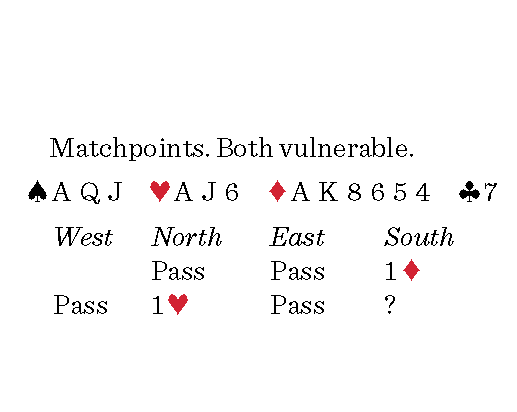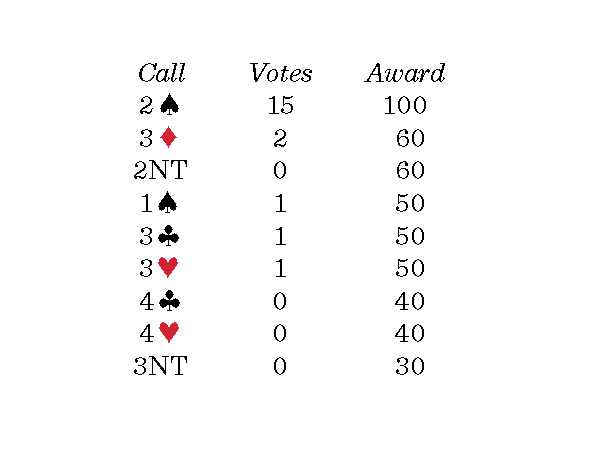
What’s your call?
| 1♠ | 1NT | |||
| 2♣ | 2♦ | 2♥ | 2♠ | 2NT |
| 3♣ | 3♦ | 3♥ | 3♠ | 3NT |
| 4♣ | 4♦ | 4♥ | 4♠ | 4NT |
| 5♣ | 5♦ | 5♥ | 5♠ | 5NT |
| 6♣ | 6♦ | 6♥ | 6♠ | 6NT |
| 7♣ | 7♦ | 7♥ | 7♠ | 7NT |
| Dbl | Pass |
On behalf of 15 voters, Lawrence explains: “How about a one-year absten-tion from this hand?” He dissects and discards the options. “3♦ is a pathetic underbid. 3♥ is wrong on values and wrong on the number of hearts. 2♠ is right on values but there is no clear plan for the rest of the auction. 4♣ — a splinter — is right on values and wrong on the number of hearts. 2NT, if forcing, could work if a partnership has the tools to bid from there. But our methods do not include this choice. I guess to bid 2♠. Perhaps I will be able to raise hearts later in a way that keeps options open.”
Colchamiro adds: “I don’t know what else to do. If partner gives me 4♠ fast-arrival style, I’ll try to make it.”
Sanborn takes the most conservative route. “This hand is the original Bridge World nightmare. Treatments have been invented over 1♣ openings to show the power hand with three-card support, but after 1♦ there isn’t room. Rather than the fake jump shift, which causes problems of its own, I’ll take the underbid of 3♦.”
Falk bids 1♠. “This is a cliche by now, but 3♥ is wrong, 2♠ is wrong and 3♣ is ridiculous. With extra-value hands and no clear way to express it, we make a cheap bid in a new suit that won’t be disastrous if it goes all pass. We are well placed if partner bids again.”
Robinson chooses a game-forcing 3♣. “If I’m going to bid a false suit, it has to be lower than my real suit or the heart suit. If I bid 2♠ and partner has four spades, I won’t survive. If partner has a club fit, he’ll think about play-ing in notrump before hanging me in spades.”
The Sutherlins find 3♥ to be the least unattractive bid. “Long a queen and short a heart. A 4–3 fit may play well with our fast hand.”

